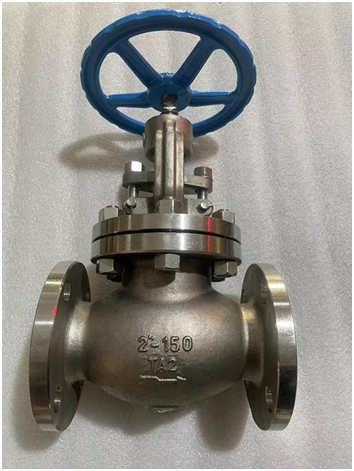Magpie Valve Selection: Accurate Matching Ensures Reliable Control
Valve Technology Sharing: Corrosion-Resistant Valve Selection: A Case Study on Electric On-Off Titanium Alloy Valves
In industries such as chemical processing, pharmaceuticals, and new energy, the safe transport and precise control of corrosive media impose strict performance requirements on valves. A recent export project involving electric on-off titanium alloy valves offers valuable insights into the material and structural selection logic under challenging conditions. Compared to conventional ceramic- or fluorine-lined valves, titanium alloy valves demonstrate significant advantages in high-vacuum and particle-laden media applications due to their exceptional corrosion resistance and mechanical strength.

The decision to use titanium alloy valves was primarily driven by the following working conditions:
With system pressures lower than 10⁻³ Pa, conventional PTFE-lined ball valves pose two major risks:
Outgassing: PTFE materials release adsorbed gases under high vacuum, which compromises system integrity and causes vacuum contamination.
Insufficient Sealing: Microscopic gaps between the PTFE lining and valve body may lead to leaks under negative pressure. In contrast, titanium alloy valves, with their integrally forged construction, ensure zero-leakage sealing.
Media containing hard crystalline solids (e.g., salt crystals, metal oxide particles) subject valve internals to intense abrasion. While ceramic-lined valves offer strong corrosion resistance, their brittleness makes them prone to chipping under particle impact, potentially leading to leakage. Titanium alloy, with tensile strength ≥ 800 MPa and impact toughness ≥ 40 J/cm², resists abrasive wear effectively and extends service life.
Superior Corrosion Resistance: Titanium alloys form a dense TiO₂ passive film, providing excellent resistance to oxidizing acids (e.g., nitric acid), seawater, and moist chlorine gas. Corrosion rate is less than 0.01 mm/year, outperforming stainless and common alloy steels.
High Vacuum Compatibility: Titanium does not outgas in vacuum environments and withstands extreme temperatures (-253°C to 600°C), ideal for cryogenic vacuum or high-temperature degassing processes.
Optimized Flow Path: Streamlined, large-radius internal contours reduce particle retention and vortex erosion. Flow-guiding grooves at the valve seat allow particles to exit with the media, minimizing accumulation.
Wear Resistance Enhancements: Valve disc and seat surfaces are laser-clad with titanium carbide (TiC) coatings (0.3–0.5 mm thick), boosting hardness to HV1200 and tripling erosion resistance.
|
Valve Type |
Corrosion Resistance |
High Vacuum Suitability |
Particle Tolerance |
Typical Failure Mode |
|
Ceramic-Lined |
Strong (acids/alkalis) |
Poor (cracking risk) |
Poor (fragile under impact) |
Ceramic spalling → internal leakage |
|
Fluorine-Lined |
Excellent (nearly all chemicals) |
Poor (outgassing, delamination) |
Moderate (liner wear) |
PTFE damage or separation from body |
|
Titanium Alloy |
Strong (in specific media) |
Excellent (zero outgassing) |
Strong (abrasion-resistant) |
Gradual sealing surface wear from abrasion |
Conclusion: In applications involving high vacuum and abrasive media, titanium alloy valves overcome the limitations of ceramic- and fluorine-lined alternatives, offering an optimal combination of sealing integrity, wear resistance, and long-term reliability.
For oxidizing or chloride-rich media, titanium alloy valves are recommended. For standard acid/alkali applications, PTFE-lined valves may be more cost-effective.
Evaluate system pressure, temperature, particle size and concentration. For example, avoid ceramic-lined valves when particle size > 1 mm. Fluoropolymers should not be used in vacuums below 10⁻⁵ Pa.
For abrasive conditions: Use titanium alloy valves with hard-faced sealing surfaces and self-cleaning flow paths.
For high-vacuum systems: Ensure valves have fully welded construction to eliminate leak risks.
This case study demonstrates that in complex corrosive applications, valve reliability depends not only on corrosion resistance but also on a comprehensive analysis of process conditions, structural resilience, and failure risks. When client process data is limited, a systematic selection process, combining media analysis, material comparison, and structural simulation, can effectively mitigate potential failures and ensure long-term stability.
As high-vacuum and ultra-clean processes become increasingly critical in fields like semiconductors and new energy, high-performance materials such as titanium alloys will play an ever more strategic role in valve technology.
For technical discussions or collaboration on special condition valve selection, we welcome your input as we continue advancing solutions for corrosive media control.
